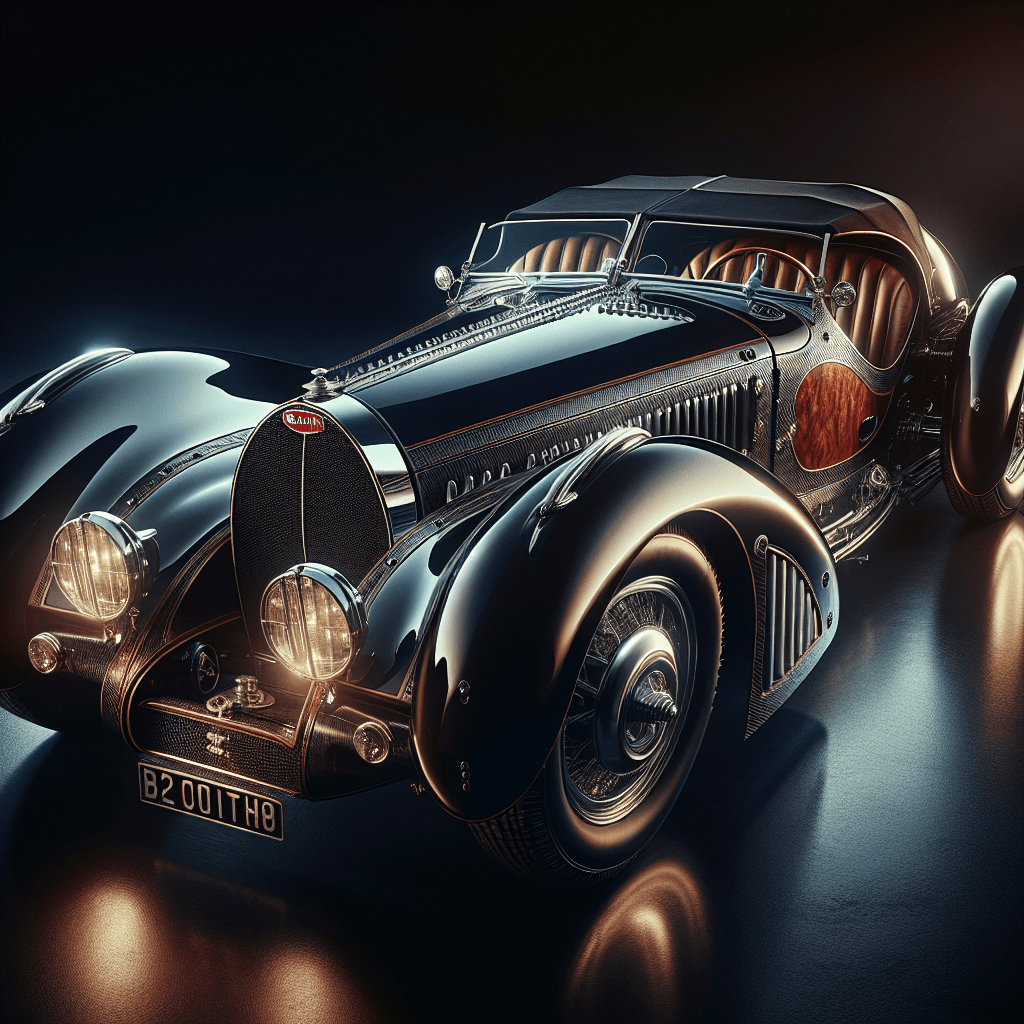Discover the Bugatti Type 57SC Atlantic, a pre-war masterpiece and rare automotive sculpture, celebrated for its unique design and exclusivity
The Bugatti Type 57SC Atlantic stands as a testament to the pinnacle of automotive artistry and engineering. More than a car, it is a crafted work of pre-war design and luxury.
The Genesis of a Legend: The Origins of the Bugatti Type 57SC Atlantic
Ettore Bugatti aimed to build cars that were both fast and beautiful. In the 1930s his son Jean led design and engineering for the Type 57 family. From this lineage the Type 57SC Atlantic was born.
Jean Bugatti blended elegance with performance. The Atlantic grew from the Aérolithe concept shown at the 1935 Paris Motor Show. Magnesium alloy on the concept proved impractical, so aluminum was used for production—helping shape the car’s final look and performance.
A Masterpiece of Design: Unique Features
The Atlantic is instantly recognizable. Its sweeping teardrop silhouette and the prominent dorsal seam create an almost sculptural profile.
- Dorsal seam: The raised seam runs from nose to tail. It results from riveted aluminum panels and became a defining visual trait.
- Aerodynamics: Low-slung body and streamlined fenders reduced drag and prioritized speed for the era.
- Engine: A supercharged 3.3-litre inline-eight (the ‘SC’ in the name) provided exceptional performance for the 1930s.
- Interior luxury: Bespoke materials, fine leathers, and artisan finishes made the cabin as refined as the exterior was bold.
The Rarity Factor: Why It’s So Coveted
Only four Type 57SC Atlantics were ever built. Today only three are known to survive. That scarcity makes each car a near-mythical object in automotive collecting.
- Limited production: Complexity, cost, and the 1930s economy constrained output.
- Notable owners: Collectors such as Ralph Lauren and Dr. Peter Williamson have added to the Atlantic’s lore.
- Provenance: Each example carries its own story, restoration history, and cultural weight—factors that drive astronomical values at auction or private sale.
The Craftsmanship Behind the Type 57SC Atlantic
Every Atlantic was largely hand-built. Craft and skill shaped its panels, engine, and interior. The result reads like an artisan object as much as a car.
- Bodywork: Aluminum panels were formed and riveted by hand, producing the distinctive seams and curves.
- Mechanical excellence: The supercharged engine and chassis engineering were advanced for the period, marrying speed to reliability.
- Interior detail: Hand-stitched leather, polished wood, and metalwork underscore the luxury ethos.
The Cultural Significance of the Atlantic
The Atlantic transcends automotive circles. It appears in museums, books, and film as an icon of taste and design.
Designers, architects, and artists cite the car for its proportions and finish. In popular culture it stands for exclusivity, refinement, and the zenith of pre-war aesthetics.
A Testament to Timeless Craftsmanship: The Enduring Legacy
The Type 57SC Atlantic remains a benchmark for automotive artistry. Its rarity and beauty ensure it will be studied and admired for generations.
To see scholarship and exhibitions related to the Atlantic, explore institutions such as the Petersen Automotive Museum.



